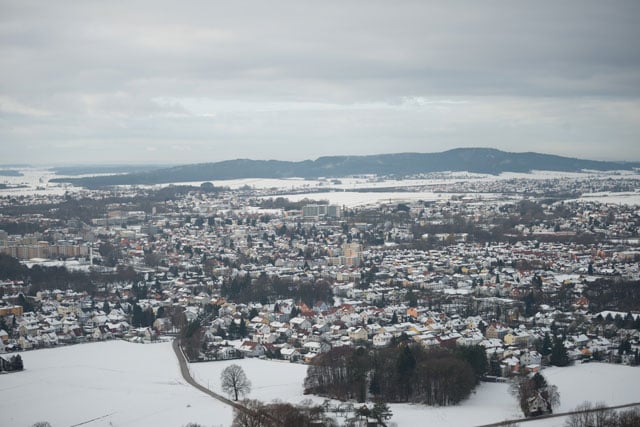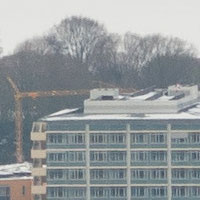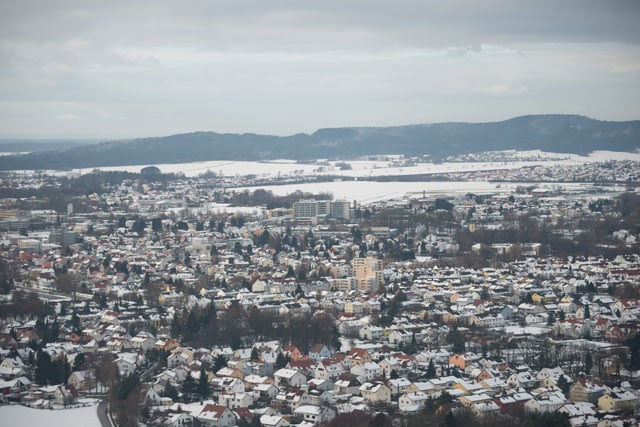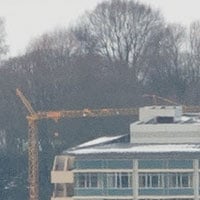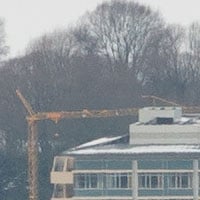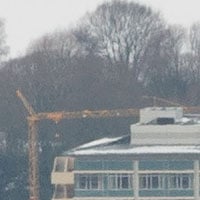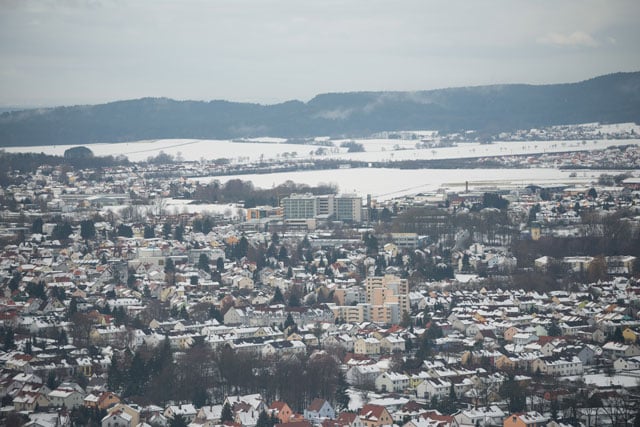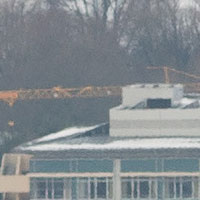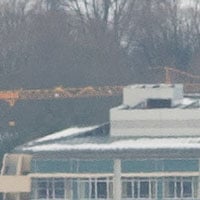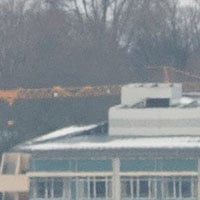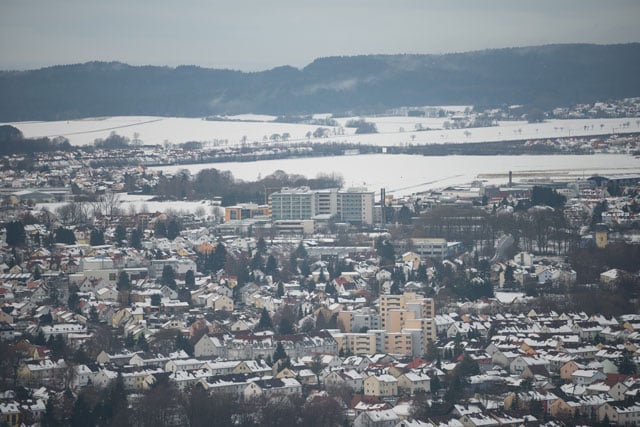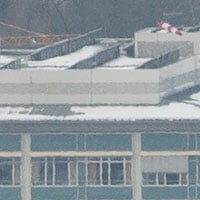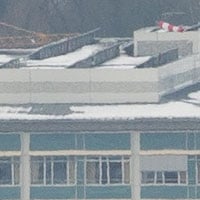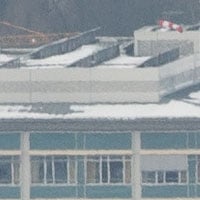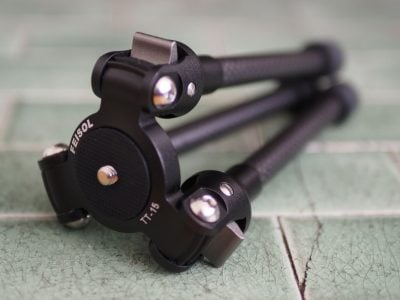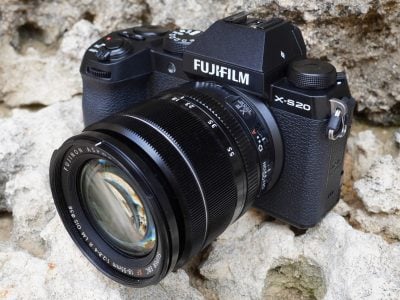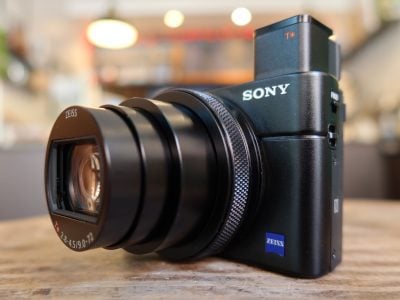Nikon 70-200mm f4G VR review
-
-
Written by Thomas
Quality
Testing: Longitudinal Chromatic Aberration
Normally I wouldn’t expect much longitudinal CA (loCA, a.k.a. “axial color” or “bokeh CA”) with f4.0 lenses. But I tested for it anyway. The Nikon 70-200mm f4.0G does indeed show some loCA. There are magenta coloration on the left and greenish hues on the right to be seen. In that respect it is worse than its larger brother at f2.8. Note: The alternating colorations of the vertical marks on the right are a sign of color-moire only and have nothing to do with loCA.
Nikon 70-200mm f/4.0G VR Longitudinal Chromatic Aberration (loCA) |
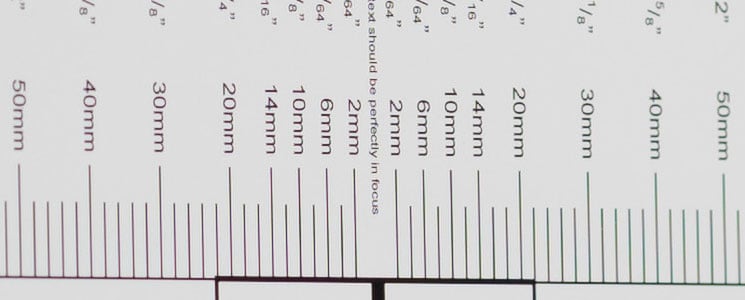 |
| 100% crop, 175mm, f4.0, left=closer, right=farther away |
Sharpness and contrast
Let’s have a look at the theoretical performance (MTF-charts) at the wide and the long end first:
Nikon 70-200mm f/4.0G VR MTF | ||
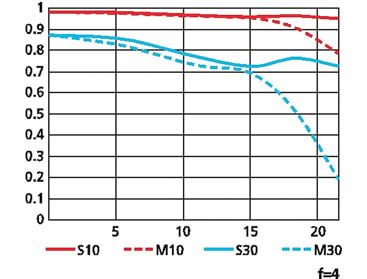 | 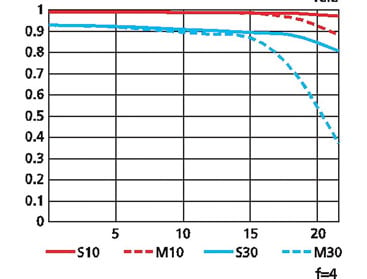 | |
| at 70mm, f4.0 | at 200mm, f4.0 | |
These charts show the lens-performance at the largest aperture f4.0. Higher values are better and the closer the dotted and the continuous lines of each color are together the less astigmatism (= resolution depends on the orientation of the test-pattern) the lens has. The x-axis displays the distance from the optical axis (=center of the sensor) in mm. I’ll show you the real-life performance at 4 mm (center), 13 mm (DX-corner), and 20 mm (FX-corner) on a D800.
From the charts the new lens should perform on a very high level regarding overall contrast. Sharpness on the long end looks impressive too with a little astigmatism creeping in beyond the DX image-circle. At the short end the lens should get a little softer towards the DX-corner with strong astigmatism setting in beyond that point. But let’s see how this theoretical performance translates into real life results in the sharpness test based on Siemens-stars.
What follows are near-center results (first column) followed by DX-corner results and FX-corner results on a D800. The D800 results from the DX-corner should be a very good approximation for performance on a 16MP DX sensor (like the D7000), because the pixel-pitch of both sensors are the same. But differences in the AA-filter and micro-lens-design of a D800 and a D7000 might yield different end-results.
Processing was done in Lightroom 4.2 from RAW at camera standard settings. Noise-reduction is set to 0, sharpening to 70/0.5/36/10, with no extra tone, color, or saturation-adjustment. White-balance was adjusted to a neutral white and I did some exposure compensation to make the brightness match. CA-removal is ON.
The following are all 100% crops!
Let’s have a look at the performance at 70mm first:
Nikon 70-200mm f/4.0G VR with Nikon D800 100% crop from center | Nikon 70-200mm f/4.0G VR with Nikon D800 100% crop from DX-corner | Nikon 70-200mm f/4.0G VR with Nikon D800 100% crop from FX-corner |
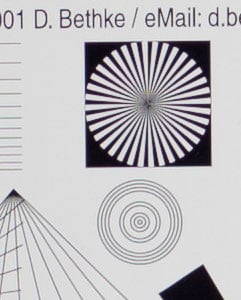 | 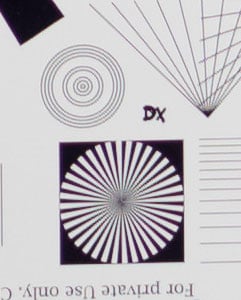 | 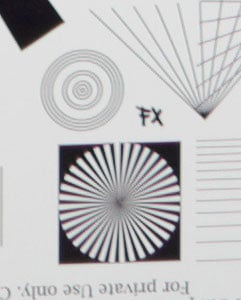 |
70mm, f4.0, 100 ISO | 70mm, f4.0, 100 ISO | 70mm, f4.0, 100 ISO |
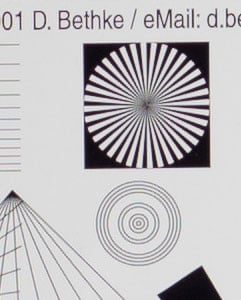 | 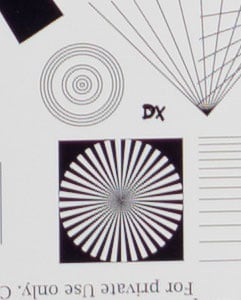 |  |
70mm, f5.6, 100 ISO | 70mm, f5.6, 100 ISO | 70mm, f5.6, 100 ISO |
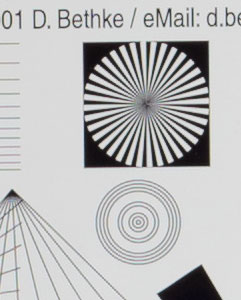 | 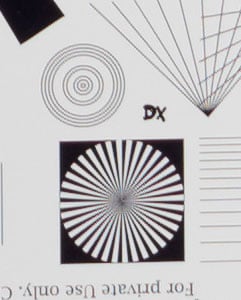 | 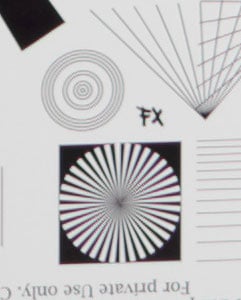 |
70mm, f8.0, 100 ISO | 70mm, f8.0, 100 ISO | 70mm, f8.0, 100 ISO |
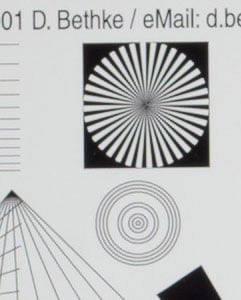 | 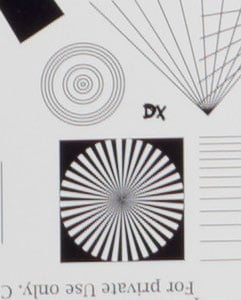 | 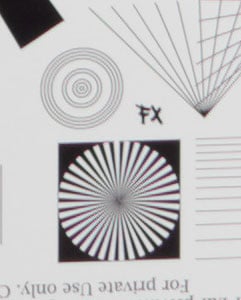 |
70mm, f11, 100 ISO | 70mm, f11, 100 ISO | 70mm, f11, 100 ISO |
These 100% crops directly from a 36MP D800 sensor confirm what we could predict from the MTF chart: very good center performance, only slightly softer DX corner, but astigmatism clearly showing in the corner of a 36MP FX sensor. You need to stop down to f8 to get better FX corners and at f11 diffraction is setting in. Some slight barrel distortions can be seen.
Performance at 105mm:
Nikon 70-200mm f/4.0G VR with Nikon D800 100% crop from center | Nikon 70-200mm f/4.0G VR with Nikon D800 100% crop from DX-corner | Nikon 70-200mm f/4.0G VR with Nikon D800 100% crop from FX-corner |
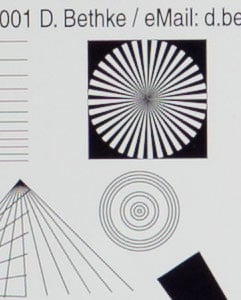 | 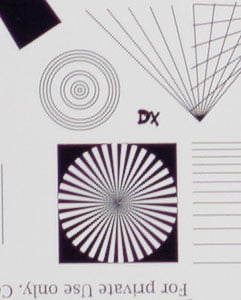 | 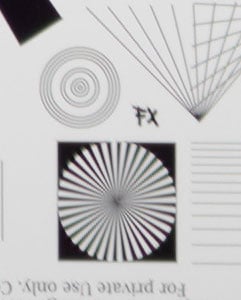 |
105mm, f4.0, 100 ISO | 105mm, f4.0, 100 ISO | 105mm, f4.0, 100 ISO |
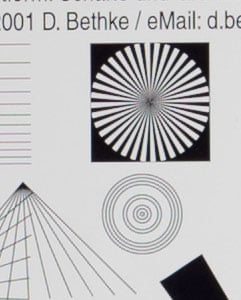 | 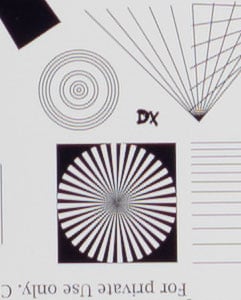 | 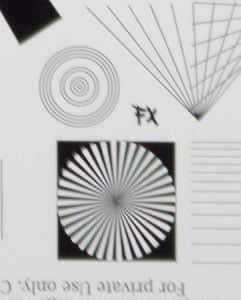 |
105mm, f5.6, 100 ISO | 105mm, f5.6, 100 ISO | 105mm, f5.6, 100 ISO |
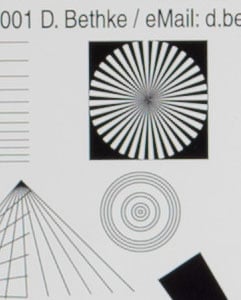 | 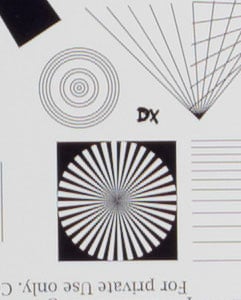 | 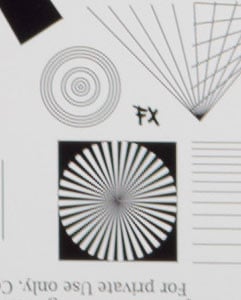 |
105mm, f8.0, 100 ISO | 105mm, f8.0, 100 ISO | 105mm, f8.0, 100 ISO |
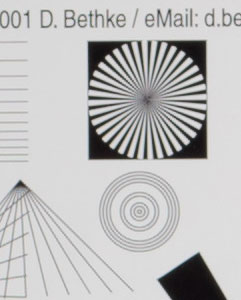 | 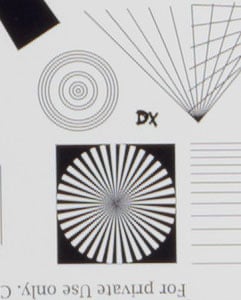 | 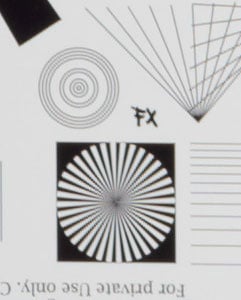 |
105mm, f11, 100 ISO | 105mm, f11, 100 ISO | 105mm, f11, 100 ISO |
At 105mm the lens shows a similar performance to 70mm, although the astigmatism in the FX-corner is even more pronounced. Distortions are on a pretty low level.
Let’s move on to 150mm:
Nikon 70-200mm f/4.0G VR with Nikon D800 100% crop from center | Nikon 70-200mm f/4.0G VR with Nikon D800 100% crop from DX-corner | Nikon 70-200mm f/4.0G VR with Nikon D800 100% crop from FX-corner |
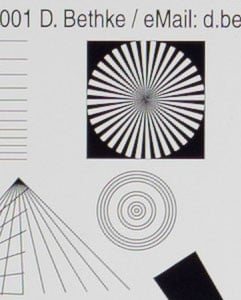 | 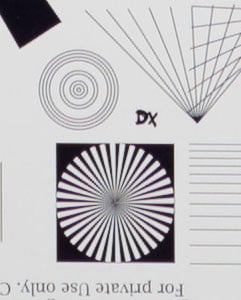 | 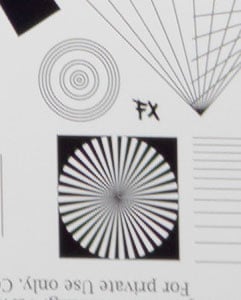 |
150mm, f4.0, 100 ISO | 150mm, f4.0, 100 ISO | 150mm, f4.0, 100 ISO |
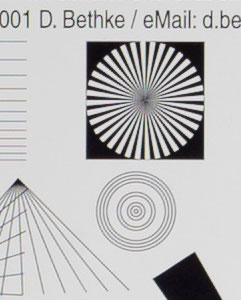 | 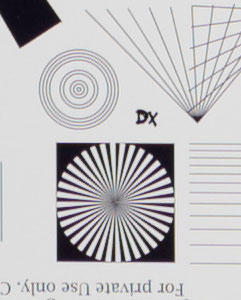 | 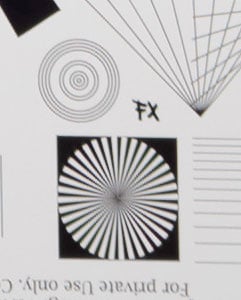 |
150mm, f5.6, 100 ISO | 150mm, f5.6, 100 ISO | 150mm, f5.6, 100 ISO |
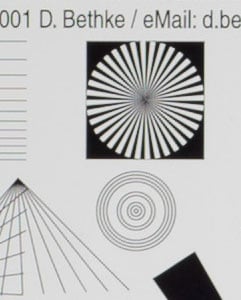 | 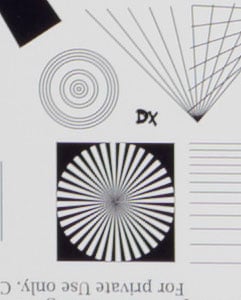 | 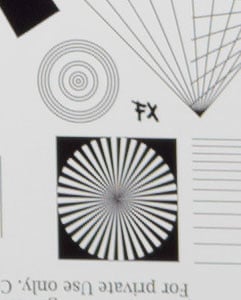 |
150mm, f8.0, 100 ISO | 150mm, f8.0, 100 ISO | 150mm, f8.0, 100 ISO |
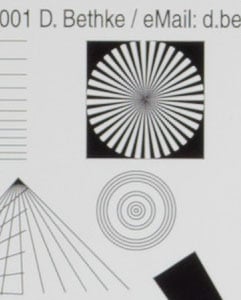 | 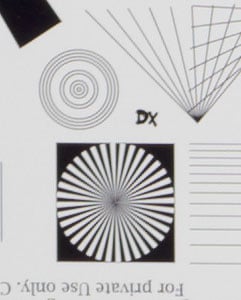 | 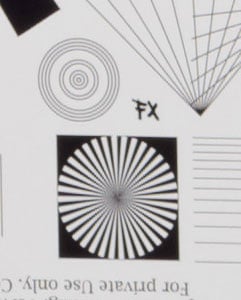 |
150mm, f11, 100 ISO | 150mm, f11, 100 ISO | 150mm, f11, 100 ISO |
At 150mm the FX-corner performs clearly better than at the shorter focal lengths as the effect of astigmatism is greatly reduced. Center and DX corner stay on a very good level. A slight pin-cushion distortion has developed.
Performance at 200mm:
Nikon 70-200mm f/4.0G VR with Nikon D800 100% crop from center | Nikon 70-200mm f/4.0G VR with Nikon D800 100% crop from DX-corner | Nikon 70-200mm f/4.0G VR with Nikon D800 100% crop from FX-corner |
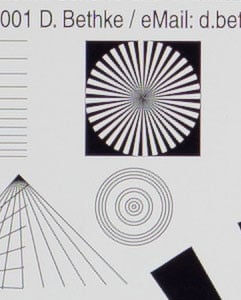 | 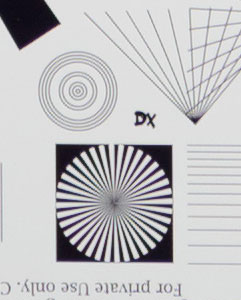 | 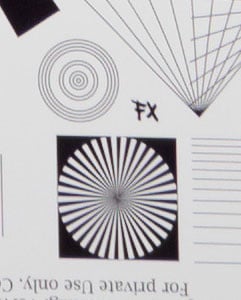 |
200mm, f4.0, 100 ISO | 200mm, f4.0, 100 ISO | 200mm, f4.0, 100 ISO |
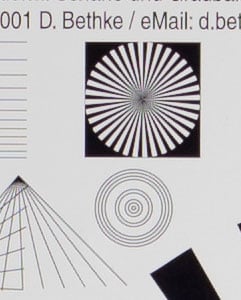 | 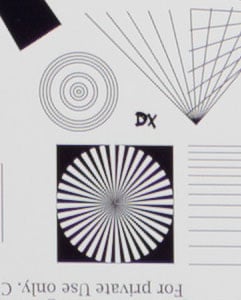 | 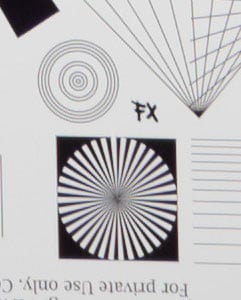 |
200mm, f5.6, 100 ISO | 200mm, f5.6, 100 ISO | 200mm, f5.6, 100 ISO |
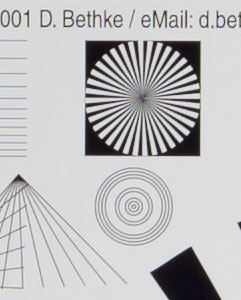 | 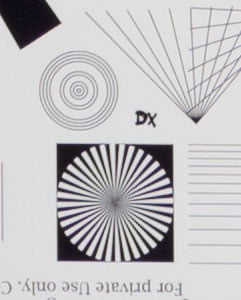 | 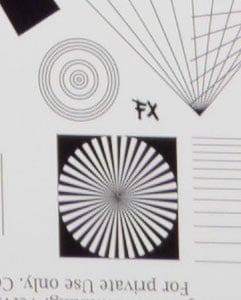 |
200mm, f8.0, 100 ISO | 200mm, f8.0, 100 ISO | 200mm, f8.0, 100 ISO |
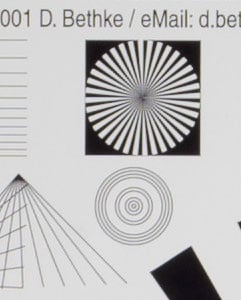 | 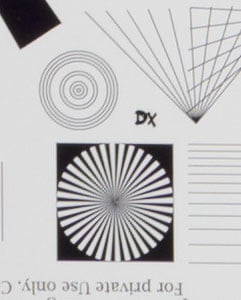 | 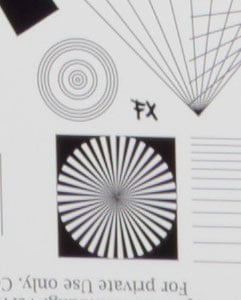 |
200mm, f11, 100 ISO | 200mm, f11, 100 ISO | 200mm, f11, 100 ISO |
At 200mm the performance wide open is very good, even in the FX corner. The pin-cushion distortion is now clearly visible.
Performance at large distances
The Siemens-star test-targets are shot at a distance of 40x focal length (i.e. at 4m for 100mm f.l.). But performance of lenses also depends on the shooting distance. Therefore I do another series of test-shots of a landscape dubbed the “Unremarkables” where you can measure distances in km, not meter. Processing was done in Lightroom 4.3 from RAW at Adobe Standard settings. Noise-reduction is set to 0, sharpening to 70/0.5/36/10, with no extra tone, color, or saturation-adjustment. There’s no tinkering with vignette-control so you see it here as it is produced by the lens. Focus was acquired at the largest aperture in contrast-based AF and not changed for other apertures.
You can click on each image to access the large original. Please respect our copyright and only use those images for personal use.
The main image shows the complete scene at f4.0 to give you an impression of the angle of view and to judge vignetting. This is followed by one row of 100% crops at different apertures each from the middle and the right (FX-)border. Let’s start with 70mm focal length:
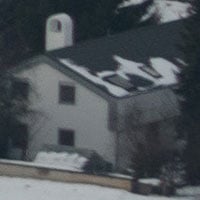 | 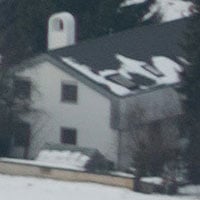 | 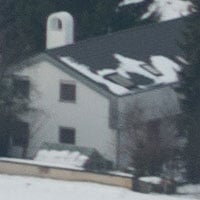 |
70mm, f4.0, 200 ISO, border | 70mm, f5.6, 200 ISO, border | 70mm, f8, 200 ISO, border |
Great performance right away in the center from f4.0 on with a very contrasty and sharp image. Center performance peaks at f5.6 while corner performance remains a bit mushy even at f8.
 | 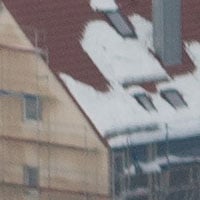 |  |
105mm, f4.0, 200 ISO, border | 105mm, f5.6, 200 ISO, border | 105mm, f8, 200 ISO, border |
At 105mm a similar picture emerges: very good center performance right from the start peaking (again) at f5.6 while the border needs stopping down to f8 to produce good sharpness.
 |  |  |
150mm, f4.0, 200 ISO, border | 150mm, f5.6, 200 ISO, border | 150mm, f8, 200 ISO, border |
At 150mm the border becomes considerably sharper and is quite good even at f4.0. Again it can be observed that closing the aperture to f8 (and beyond) starts reducing the excellent center-sharpness by showing the effect of diffraction.
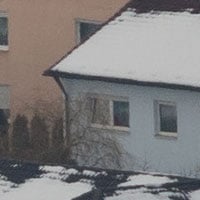 |  | 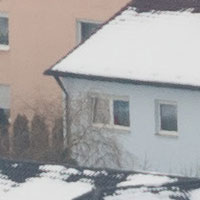 |
200mm, f4.0, 200 ISO, border | 200mm, f5.6, 200 ISO, border | 200mm, f8, 200 ISO, border |
And finally at 200mm focal length the lens repeats its very good performance at 150mm with even a tad more definition at the borders. Excellent!
All-in-all the performance of this lens is quite impressive across the range of focal lengths albeit the lens seems to be at it’s best on the long end. Keep this in mind when you need corner-to-corner sharpness at lengths below 130mm and close the lens to f8 for improved FX-corner performance. Above 130mm the lens performs beautifully even wide open. And f5.6 is all you need to stop down to achieve very good performance even in the corners of the FX frame.
When using the lens on a DX body, you can use it wide open without worrying about a degradation in performance.
